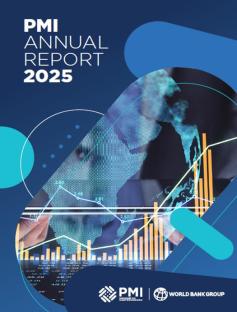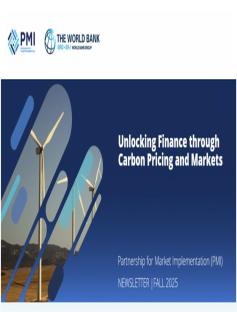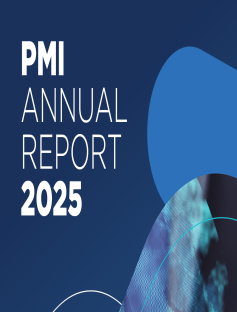Entering the massive, light-green stadium in Baku for COP29 was energizing, as the crowds flowed in under the slogan, “In Solidarity for a Green World”. This year’s COP was a pivotal moment, focused on resolving the long-pending rules under Article 6 of the Paris Agreement to establish a framework for international cooperation, including carbon markets – decisions that will shape the future of global carbon trading and its role in combating climate change. With over 50,000 participants gathered in Baku, Azerbaijan, the 29th Conference of the Parties marked a critical milestone in the climate agenda.
While climate finance rightly dominated the broader discussions at COP29, the adoption of Article 6 rules stood out as a significant achievement. Resolving these long-pending rules was critical—delaying them further was not an option. Their adoption lays the groundwork for renewed confidence in carbon markets, creating the potential to drive meaningful climate action and shaping the future trajectory of global carbon trading.
This year’s COP was a pivotal moment, focused on resolving the long-pending rules under Article 6 of the Paris Agreement to establish a framework for international cooperation, including carbon markets – decisions that will shape the future of global carbon trading and its role in combating climate change.
Article 6: Almost a Decade in the Making
Article 6 of the Paris Agreement is a cornerstone of international collaboration, enabling countries to work together through both market and non-market mechanisms to help achieve their climate goals. Its adoption in 2015 marked a significant milestone for international climate cooperation, but unresolved technical and political disputes-particularly around carbon credit accounting and double counting- stalled its implementation for years.
Meanwhile, voluntary carbon markets faced mounting criticism over the past decade, as noted in the State and Trends of Carbon Pricing 2024 report. Accusations of greenwashing, low-quality credits, and inflated emissions reduction claims eroded trust in offset projects. This decline in trust has fueled demands for stricter standards and greater transparency to restore credibility and ensure carbon markets effectively support global climate goals.
At COP29, significant progress was made in advancing carbon markets with three key outcomes that will help advance carbon markets and enhance their integrity.
Game Changing Decisions for the Market
At COP29, significant progress was made in advancing carbon markets with three key outcomes that will help advance carbon markets and enhance their integrity:
1. Methodological Guidelines to set clear rules for how emission reductions (or removals) are calculated
COP29 saw the approval of a set of methodological guidelines and standards for a centralized carbon market mechanism. This is a huge step toward bringing transparency and consistency to carbon markets. Why does this matter? These guidelines establish the procedures for calculating, monitoring and verifying emission reductions, ensuring their integrity.
With these new rules in place, companies and investors can have greater confidence in carbon markets, knowing that they are backed by solid standards. This sets a benchmark for quality. It is also the first time the rules mandate the use of a “sustainable development tool,” which integrates environmental and human-rights safeguards.
2. Accountability and transparency in authorizing credits – avoiding double counting
There was a major step forward in streamlining the process for authorizing carbon credits for different uses and deciding whether to allow changes to already issued authorizations. This means the system will now have clearer timing and processes for issuing carbon credits that can be bought or sold internationally, along with conditions for countries to revoke carbon credits that have already been authorized and traded.
This is a big deal because it creates a more consistent and trustworthy system while safeguarding against double counting. For instance, when a country authorizes credits for international use — known as Internationally Transferred Mitigation Outcomes (ITMOs) — it must make a Corresponding Adjustment in its greenhouse gas inventory. This adjustment ensures the emissions reduction is counted either by the country selling the credit or by the buyer using it for compliance, but not both, preserving the environmental integrity of the market.
3. International Registry for Carbon Credits – Tracking the History of Issuance of Carbon Credits
An important consensus was reached on providing services under Article 6’s international registry. This service is designed to enable countries to track the history of issuance, transfer and cancellation of ITMOs, even if they lack a national registry system.
The new dual-layer registry system will allow smaller or less-resourced countries to issue and hold carbon credits that can be authorized for trade later. By offering this additional service, the international registry ensures equitable access to the global carbon market, enabling broader participation.
What’s Next?
The adoption of these new rules is a significant step forward, boosting transparency and trust in carbon markets. This progress is crucial to unlocking potential investments in emission reductions, particularly in countries that need it most.
However, the real challenge lies ahead — turning these rules into action. Many developing countries still require support to effectively participate in carbon markets. This means building robust policy and regulatory frameworks, developing strategies to engage in the market, strengthening institutional arrangements, and ensuring transparent governance and infrastructure to enable accurate accounting of greenhouse gas emissions.
The World Bank has been supporting countries’ Article 6 readiness through different capacity building initiatives and country engagements piloting projects. For example:
- Carbon Initiative for Development projects supported clean cooking programs in countries like Burkina Faso, Rwanda and Ethiopia, showcasing scalable approaches to integrating carbon markets with development goals.
- Transformative Carbon Asset Facility pilots, such as the policy crediting operation in Uzbekistan, demonstrate how fossil fuel subsidy reforms can generate millions of tons of verified emissions reductions for international markets.
- Partnership for Market Implementation Facility engagements in more than 30 countries support countries with both readiness and implementation of carbon pricing and carbon markets, mainly assisting the decision-making process and building countries capacity for the implementation of national policies, supporting and deploying necessary infrastructure, and stakeholder capacity building. In Bhutan, the PMI is supporting the setup of the Bhutan Carbon Fund and helps develop the country’s carbon market policy framework and strategy. In Senegal, the PMI supports the regulatory and institutional infrastructure for Article 6, as well as roadmap for operationalization of a carbon tax.
These programs help countries prepare for Article 6 implementation and integrate carbon markets into broader climate strategies. These initiatives are designed to enhance the national capacities of client countries for effective participation in carbon markets while demonstrating proof of concept through pilot projects and innovative, scaled-up crediting approaches.
Moving forward, scaling up carbon markets will require aligning them with sustainable development goals. By building capacity and fostering international cooperation, we can ensure that engagement with carbon markets can not only help countries reduce emissions but also contribute to their economic development and a more equitable, livable planet.
Originally published at: https://blogs.worldbank.org/en/climatechange/from-paris-to-baku--article-6-rules-finally-take-flight-after-a-





